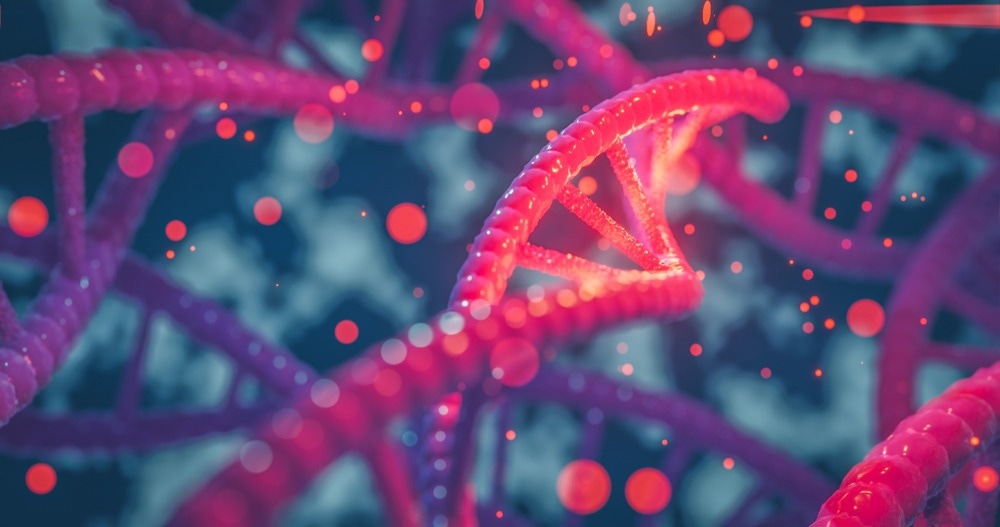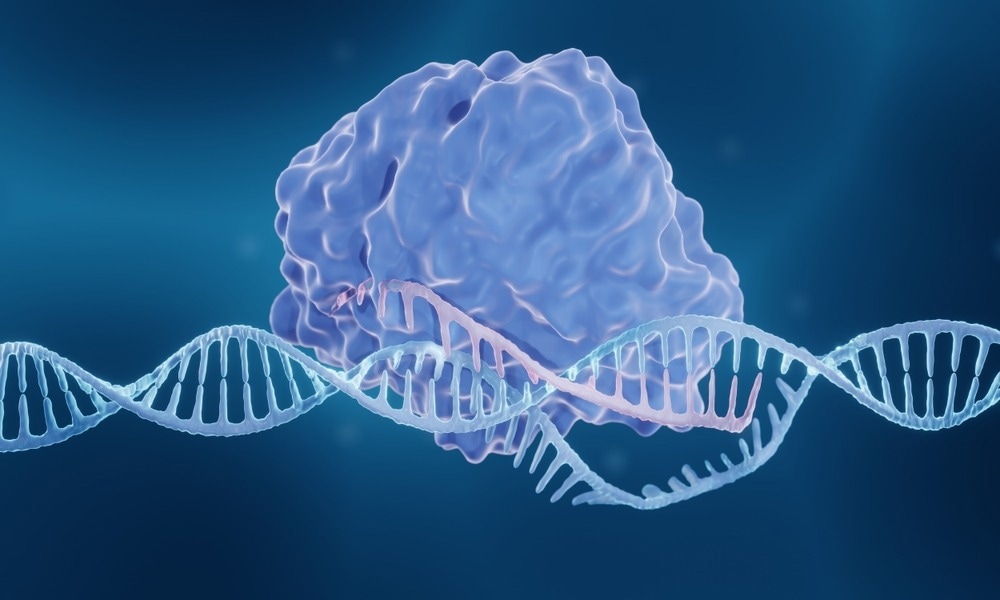Gene therapy is a group of genetic engineering techniques aimed at modifying gene sequences and expression patterns to provide a suitable medical treatment.
Both emerging and conventional gene therapy approaches have raised concerns about the possibility of producing undesired effects that trigger health problems. These concerns are mainly related to poisoning by toxic chemicals, mutations associated with diseases such as cancer (uncontrolled cell growth), or unsought activation of inflammatory immune pathways. Essential safety considerations for gene therapy are currently being addressed to reduce the likelihood of off-target effects to zero.

Image Credit: CI Photos/Shutterstock.com
What does ‘Gene Therapy’ mean?
Gene therapy refers to the genetic engineering approaches related to delivering nucleic acids (either DNA or RNA) into human cells to restore defective gene function. These techniques allow us to treat diseases by delivering nucleotide sequences to sick cells.
Before the arrival of gene therapy, we were subject to what geneticists call ‘inherited genetic load’, a set of limitations associated with deleterious gene variants (alleles) that may affect health or predispose us to suffer certain diseases. Gene therapy makes it possible to modify the genes (or expression patterns) of an organism/cell in a laboratory setting.
Safety Concerns
The most common gene therapy approach uses viral vectors capable of expressing a functional copy of the target genes whose expression we desire to restore, which can be efficiently transcribed (mRNA) and translated into the cell to synthesize the protein associated with the disease state.
Viral vectors include, among others, retrovirus, adenovirus, herpes simplex virus, etc., all of which can be genetically modified in the laboratory to carry the gene of interest. In this regard, it is important to remark that viral-based gene transfer has raised concerns regarding the immunogenicity of these vectors and associated with the activation of inflammatory pathways. The expensive laboratory production procedures also add an additional hurdle to overcome.
Over the last few years, non-viral vectors have increasingly gained interest within the scientific community to overcome the abovementioned limitations. The latest advancements in gene therapy have allowed the development of more versatile, safe, and customizable vectors for such purposes.
For example, liposome molecules can be efficiently designed to deliver specific DNA sequences to target cells. These nanoparticles (liposomes) exhibit the advantage that they can be easily produced at a larger scale with a lower cost than viral methods.
Polycations are non-viral vectors that also entail a good option to deliver nucleic acids. Polycations are polymeric nanoparticles that exhibit a net positive (+) charge, which has already been used to transfer small interfering RNA (siRNA) sequences into specific cells. Polycation-based gene therapy can solve issues associated with low gene transfer efficiency caused by extracellular and intracellular barriers that hamper the laboratory procedure.

Image Credit: ART-ur/Shutterstock.com
CRISPR Gene Therapy
The CRISPR-Cas9 genetic scissors have revolutionized molecular biology by providing an easy-to-use tool capable of editing the genome in an RNA-programmable manner. This genome editing system consists of a single guide RNA (sgRNA) that directs the CRISPR-Cas9 complex to target DNA sequences and a CRISPR-associated (Cas9) endonuclease enzyme that cuts the genome at precise nucleotide sequences. In gene therapy, the CRISPR-Cas system is very useful for editing target genomic sequences and thus restoring normal phenotypes of cells affected by inherited diseases and disorders.
The CRISPR-Cas system has shown promising results for many therapeutic applications, such as:
- Cystic fibrosis: an inherited recessive disorder associated with mutations in the cystic fibrosis transmembrane conductance regulator (CFTR) gene, which is well known to damage lung cells. In induced pluripotent stem cells, the CRISPR-Cas genome editing system has already been used to correct mutations in the CFTR gene.
- Duchenne muscular dystrophy: an X-linked inherited disorder caused by mutations in the dystrophin (DMD) gene, located on the X chromosome's short arm. The CRISPR-Cas9 system successfully corrected a stop mutation of the DMD gene in dog muscle cells.
- Retinal diseases: cells found in the retina represent an excellent target for gene therapy because this tissue is well compartmentalized, a feature that makes it easily accessible and favors the use of genome editing techniques. The CRISPR-Cas9 genome editing tool has already been used to treat Leber congenital amaurosis type 10 (LCA10), a rare inherited retinal degeneration associated with mutations of the CEP290 gene.
- Alzheimer's disease: a mental illness that may lead to dementia in older adults. In mice cells, the CRISPR/Cas9 system corrected mutations in the Apolipoprotein E (APOE) gene, which encodes a protein whose mutations have been proposed as associated with Alzheimer's disease and cardiovascular disease.
CRISPR Gene Therapy: Safety Concerns
The main safety concern of the CRISPR-Cas9 genetic scissors is the risk of off-target effects, i.e., the likelihood of cutting DNA in unintended genomic regions different from the target sequence, thereby generating undesired mutations. This major limitation is now being addressed by means of exhaustive genome sequencing and bioinformatic analyses that allow the designing of safe-highly specific sgRNAs, which exhibit a near to zero number of predicted off-targets.
Sources:
- Gallego, Carmen, Manuel AFV Gonçalves, and Jan Wijnholds. "Novel therapeutic approaches for the treatment of retinal degenerative diseases: Focus on CRISPR/Cas-based gene editing." Frontiers in neuroscience 14 (2020): 838. DOI: https://doi.org/10.3389/fnins.2020.00838.
- Nghiem, Peter P., and Joe N. Kornegay. "Gene therapies in canine models for Duchenne muscular dystrophy." Human Genetics 138.5 (2019): 483-489. DOI: https://doi.org/10.1007/s00439-019-01976-z.
- Schrauben, Michael, Emma Dempster, and Katie Lunnon. "Applying gene‐editing technology to elucidate the functional consequence of genetic and epigenetic variation in Alzheimer’s disease." Brain Pathology 30.5 (2020): 992-1004. DOI: https://doi.org/10.1111/bpa.12881.
- Tran, Ngoc Tung, et al. "Precise CRISPR-Cas–mediated gene repair with minimal off-target and unintended on-target mutations in human hematopoietic stem cells." Science Advances 8.22 (2022): eabm9106. DOI: 10.1126/sciadv.abm910.
- Zhang, Baohong. "CRISPR/Cas gene therapy." Journal of Cellular Physiology 236.4 (2021): 2459-2481. DOI: https://doi.org/10.1002/jcp.30064.
- Zhang, Yanli, Danuta Sastre, and Feng Wang. "CRISPR/Cas9 genome editing: a promising tool for therapeutic applications of induced pluripotent stem cells." Current Stem Cell Research & Therapy 13.4 (2018): 243-251. DOI: https://doi.org/10.2174/1574888X13666180214124800.
Further Reading
Last Updated: Nov 29, 2022